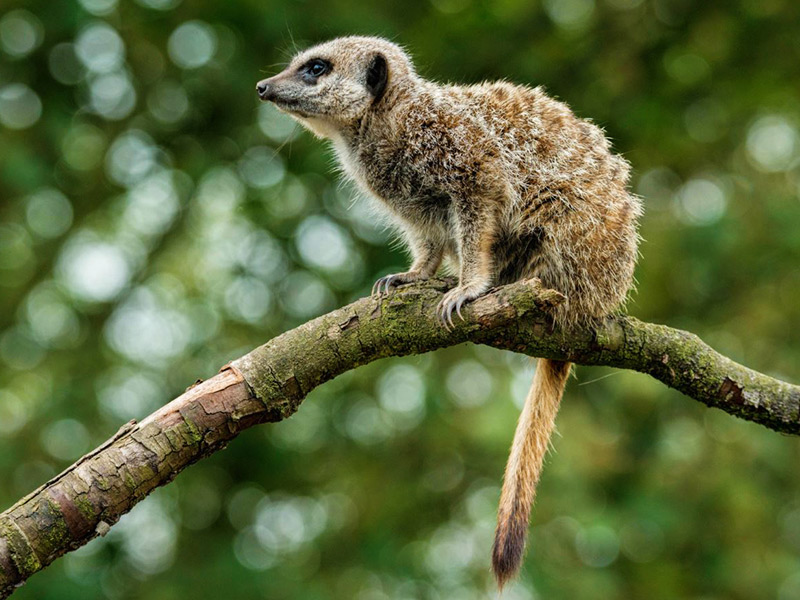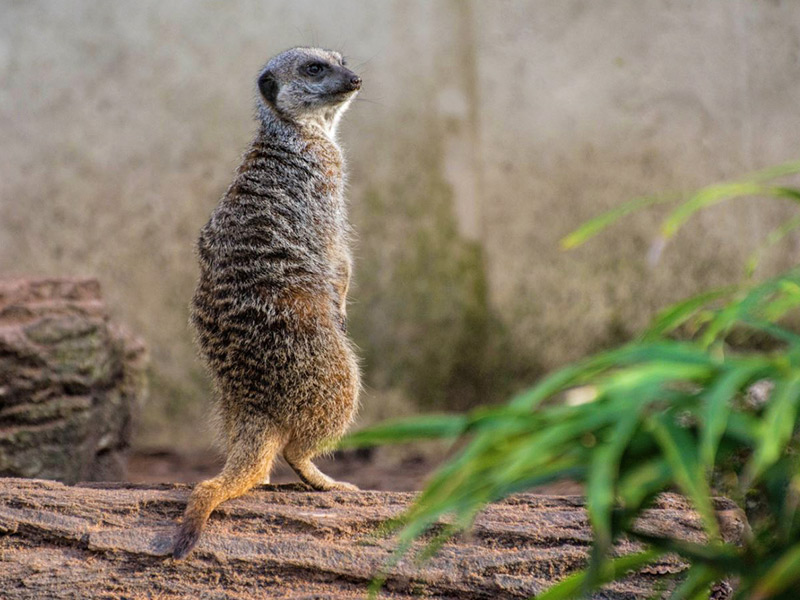Hurry! Save 25% on 2026 memberships!


Meerkat










Meerkats are great favourites with our visitors of all ages. In the wild, they can live for 12 - 15 years in gangs of up to 40 individuals and establish up to 15 dens on their territory. Each den has an elaborate system of tunnels and sleeping chambers in order to confuse predators which may try to attack them underground. Birds of prey, jackals and wild dogs are their main predators.
Meerkats have dark markings in the fur on their backs which, like humans’ fingerprints, are unique to each particular animal. They also have a dark tip on their tail which can be identified by other members of the troop when they’re out hunting. Dark bands of fur around their eyes help to reduce the glare of the strong sunlight.
Meerkats breed successfully both in the wild and in captivity with litters between 1 and 5 pups, although most commonly, 3. In the wild they enjoy a varied diet of mainly insects, but also reptiles, scorpions, small mammals, eggs and plants. In the Zoo, they are fed pellets, eggs, chicks, mice, fruit, vegetables and live insects.
Get the best price!